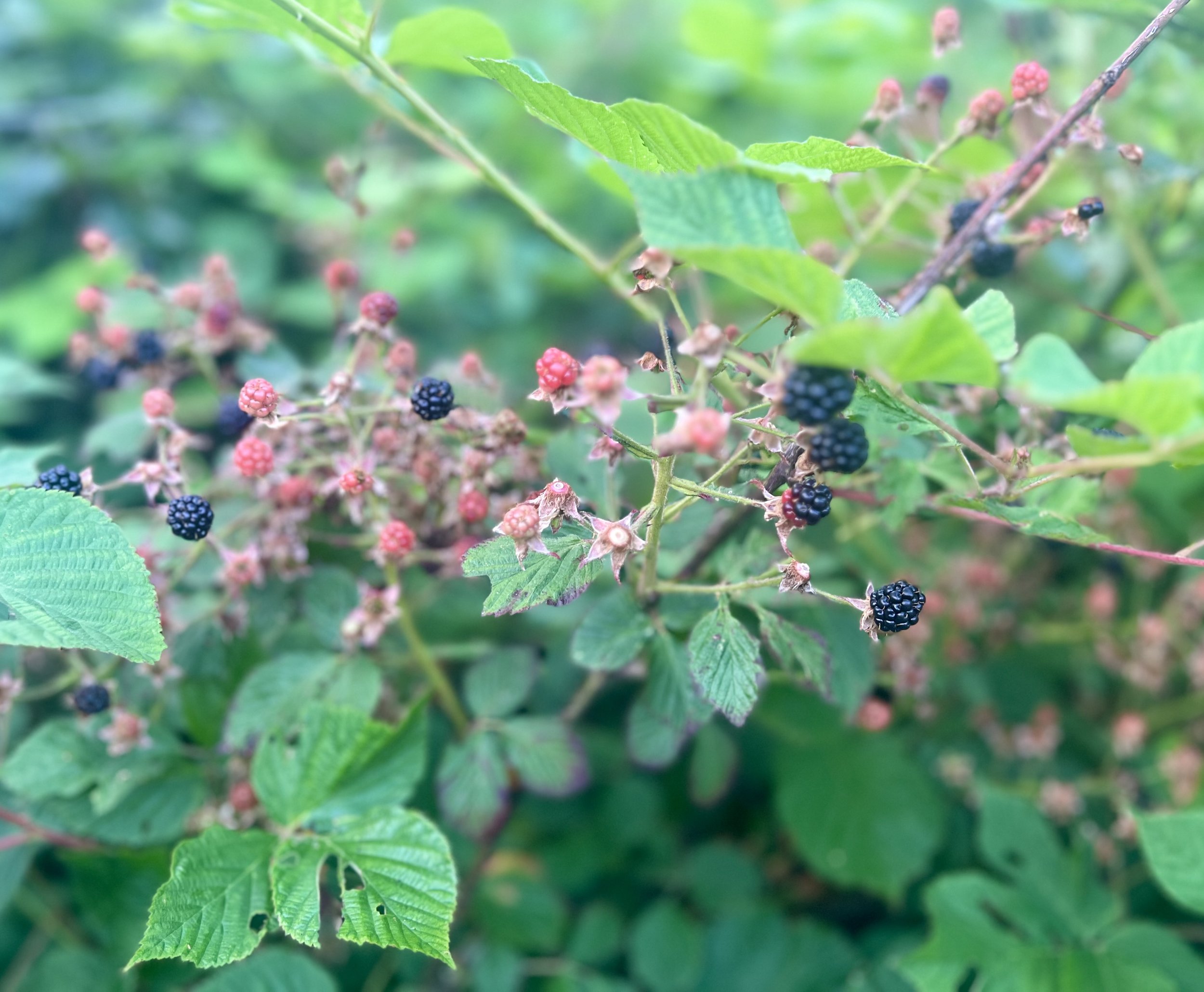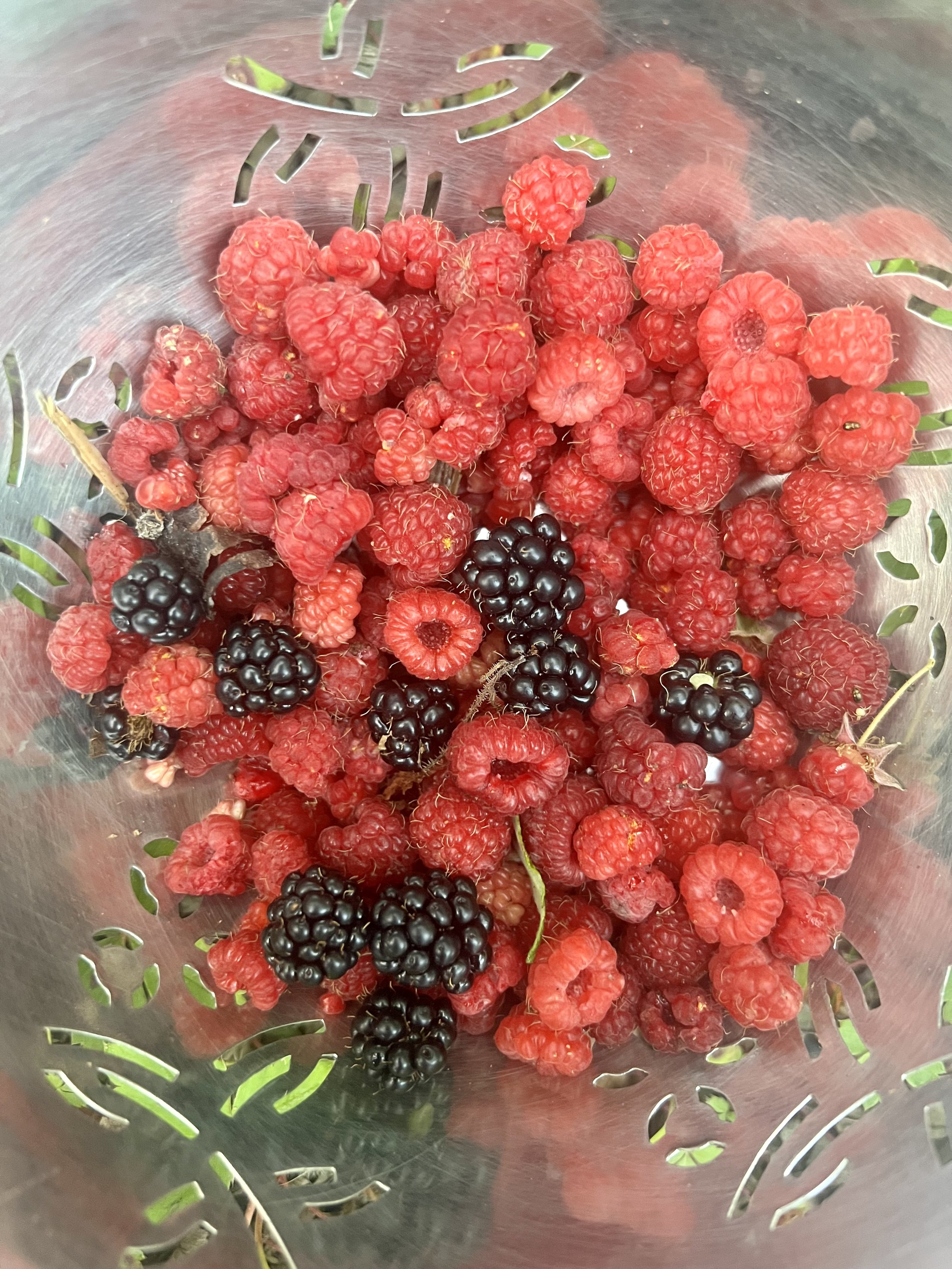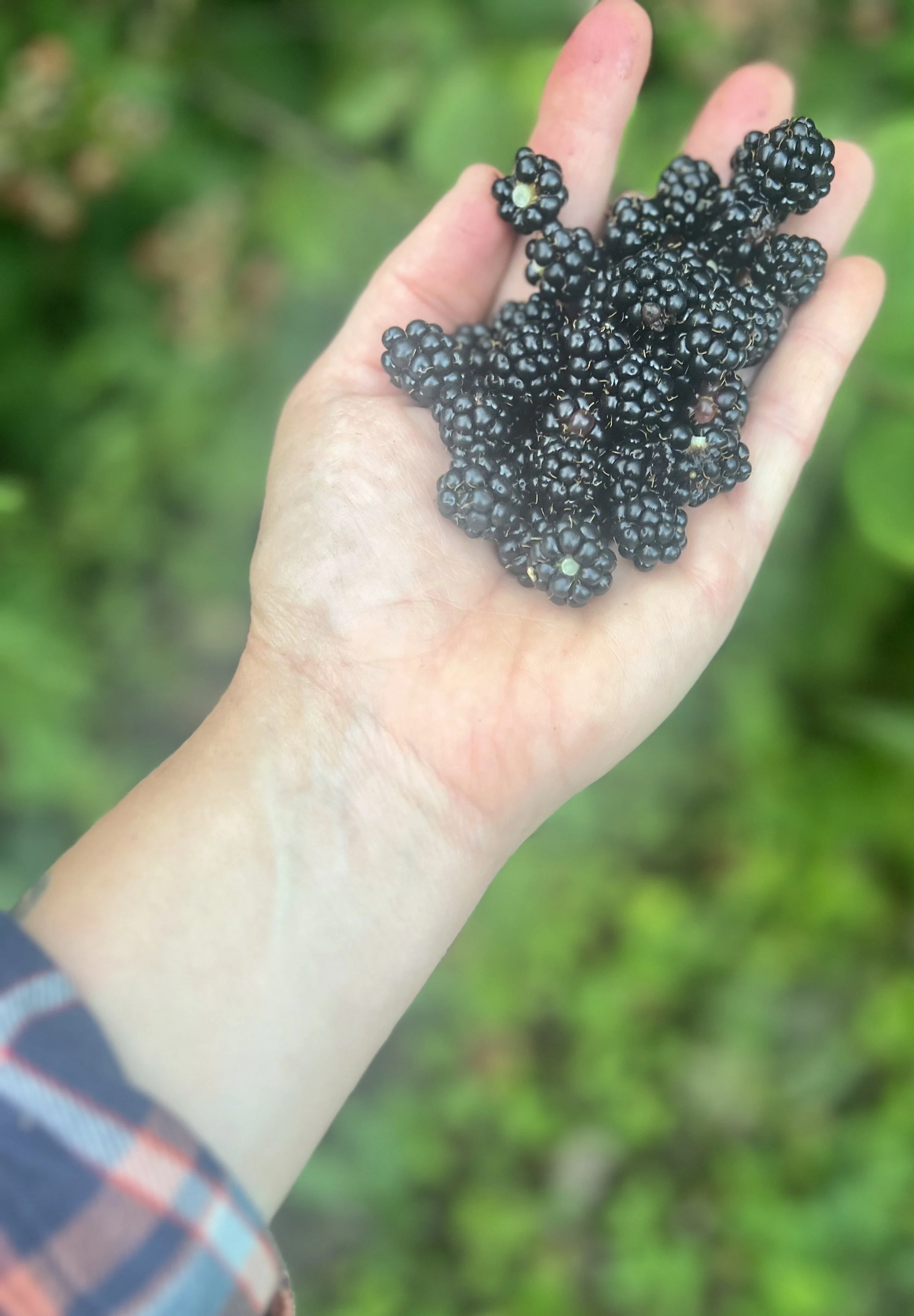Raspberries
August brought raspberries. I found them one early morning wandering along the path to the brook behind our home. Pushed against the forest, the bushes stood out glistening with dew. Their deeply textured, serrated and veined, light-green leaves would mature to a deep green and then bronze. Immediately popping one into my mouth I tasted the sour, sweetness; an intense flavor that only a fresh picked fruit can deliver. A hazy memory of my Grandmother’s garden came to mind. As a small child I would trail behind her through the rows of peppers and beans as she inspected their progress, snapping green beans from their stem, her apron pockets full and deep.
Nestled among the thick growth is where the ripest, juiciest “druplets” hang. They are ever patient waiting for an insect to crawl upon them to nourish itself or an eager hand to pluck them free.
Raspberry plants are comprised of several parts: roots, canes, thorns, leaves and fruit (called "drupelets"). There are more than 200 types of raspberry plants. Perennial shoots — called canes — extend from the crown of a raspberry plant. Canes can be tall, thick, spiny, trailing or erect, depending on the raspberry variety. Canes are classified as “primocanes” (first-year growth) or “floricanes” (second-year canes )that will produce fruit.
Raspberry bushes can produce fruit for as long as 20 years and are full of antioxidants, vitamin C and fiber.
Although the seedy, fleshy and hollow fruit had been growing since mid-spring my interest only peaked when their brilliant red, perfectly shaped body revealed itself. Our colonized mindset has trained us to seek product rather than process but the wild raspberry plant had undergone a transformation over the winter, one that enabled it to renew its life cycle.
Raspberry seeds must undergo both a period of warm and cold stratification. The seeds require 90 days of temperatures that hover at 68 to 86 degrees. They also need a cold spell spanning a minimum of 90 days at 36 to 41 degrees. If the seeds only undergo a period of cold stratification, they will not germinate. Digestive enzymes within an animal facilitate and increase seed germination when the seed passes through the animal's digestive tract. During the winter months, the flower buds begin to develop. Low temperatures and short days help the plant begin to form the buds. Primocane-fruiting cultivars begin bud formation during the summer months.
Once flowering occurs in either the spring or summer months, the plant's fruits begin appearing. The flowers depend on bees, flies and beetles for germination. The fruits first develop at the canes' tips and work their way downward. The fruit does not last particularly long on the stems before breaking down.
You can’t pick raspberries in a rush. Gingerly, to escape thorns, I would reach my hand in and pull too fast only to squish the precious fruit or search the ground after watching it slip through my fingers.
Picking raspberries for several weeks sent me on an inward journey. Rushing through the picking process was my learning. Slowing down brought calm that enveloped me. The ground a sacred space to kneel upon, hands careful and tender, my large basket never full.
Anyone who knows me well, knows that up until this point in my life, I rarely did anything slow. Quite the opposite, in fact. Rushing through days, jamming each moment with as much activity as possible. This kept me from embodying and feeling all that our experiences have to offer. It’s a clever coping mechanism…until you’re holding way too many raspberries, eventually watching them all drop from your hands.
Like the raspberries over winter, we too are constantly undergoing quiet, unseen metamorphosis. Difficult and joyous, a blend of pain and pleasure, Ying and Yang. We flow, tread or sink in the waters of life.
As dusk began to settle one evening and I had ventured far from the land surrounding our house, I came across a raspberry bush, scattered with blackberries.
Fascinated by this hybrid, I stopped and reflected. It is in the slowing down that we are able to appreciate the moments of our lives. We are blessed with new perspective, new opportunities and awareness that pull us deeper into becoming more of who we are meant to be.
The blackberry/raspberry bush was a sign of process, change, rebirth, transformation, renewal and most of all, patience.
This time of Westerly direction around the medicine wheel of life is connected to the fall season and the element of water. We feel an inward pull at this time and can acknowledge what is no longer meant for us and what is ready to be reborn. The water element is associated with deep emotions and currents of feeling. The summer months brought abundance and creation. Moving into fall we let our manifested creations become a part of our past story. If we are unwilling to let go, in order to define ourselves in comfortable terms, we are unable to provide space for the next phase of our transformation. Walking into the West is not an easy path. It asks us to be fully vulnerable and identify what no longer serves us so that we can metamorphose into a new expression of ourselves.
I hope that your transition into fall this year is beautiful, thoughtful and inspiring for all that is to come.
Blessings and wellness!


